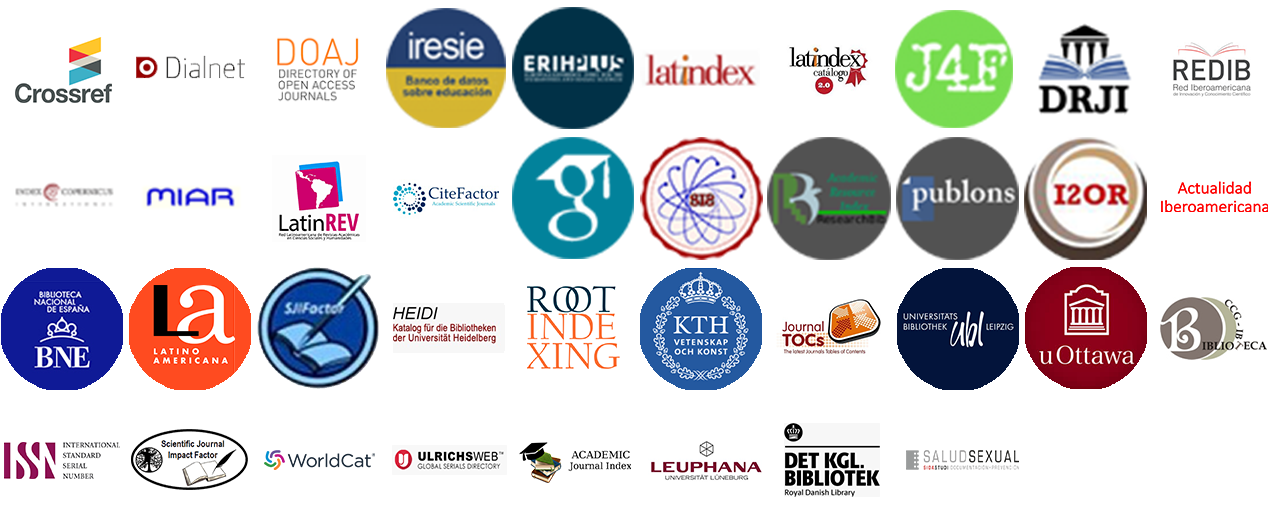Mobile application for the promotion, strengthening and preservation of the Zapotec indigenous language (Diidxazá)
DOI:
https://doi.org/10.36825/RITI.10.22.007Keywords:
Mobile Application, Zapotec Indigenous Language, Empowerment, Flutter, User Centered DesignAbstract
The research consists of the development of a mobile application for Android and iOS operating systems, with the main purpose of promoting, strengthening and preserving the indigenous Zapotec language Diidxazá in its variant of San Blas Atempa, Oaxaca, Mexico. Through the application, any user who has little knowledge of the language, can practice through fun and interactive activities without an internet connection. Its intuitive and interactive design shows basic information about the indigenous language and its representation through images, as well as the audio pronunciation of each word. The methodology used is the user-centered design, which allows to understand the needs of the users and thus ensure that they obtain a greater satisfaction and an experience that guarantees the good use of the application. In addition, a modern technological tool such as the Flutter mobile development framework and the Visual Studio Code source code editor were used. As a result, a high-fidelity prototype was obtained, as well as the approval of the users through the usability scale system.
References
Anuario. (2005). Centro de Investigaciones y Estudios Superiores en Antropología Social. CIESAS.
Rosales, R, A. (2014). ¿Lenguas indígenas? pérdida irremediable? El economista. https://www.eleconomista.com.mx/arteseideas/Lenguas-indigenas-perdida-irremediable-20140810-0083.html
Instituto Nacional de Lenguas Indígenas. (2008). Programa de revitalización, fortalecimiento y desarrollo de las lenguas indígenas nacionales 2008-2012, PINALI. https://site.inali.gob.mx/pdf/02_JUL_PINALI-2008-2012.pdf
Comisión Nacional para el Desarrollo de los Pueblos Indígenas. (2005). Acciones de Gobierno para el Desarrollo Integral de los Pueblos Indígenas. https://www.inpi.gob.mx/2021/dmdocuments/CDI_informe_2005.pdf
Ordóñez, M., Rodríguez Hernández, P. (2008). Oaxaca, el estado con mayor diversidad biológica y cultura de México, y sus productores rurales. Ciencias (91), 54-64. https://www.revistacienciasunam.com/pt/44-revistas/revista-ciencias-91/232-oaxaca-el-estado-con-mayor-diversidad-biologica-y-cultural-de-mexico-y-sus-productores-rurales.html
ANENOR. (2000). UNE EN ISO 13407 Procesos de diseño para sistemas interactivos centrados en el operador humano (ISO 13407: 1999). https://www.une.org/encuentra-tu-norma/busca-tu-norma/norma?c=N0023082
Escorza-Sánchez, Y. M., Martínez-Martín, G., Saldaña-Tapia, Y., Maldonado-Catalán, O. (2018). Aplicación móvil para reforzar el aprendizaje de la lengua Hñähñu. Revista de Tecnología y Educación, 2 (6), 32-31. https://www.ecorfan.org/republicofperu/research_journals/Revista_de_Tecnologia_y_Educacion/vol2num6/Revista_de_Tecnolog%c3%ada_y_Educaci%c3%b3n_V2_N6_4.pdf
González Orozco, D. D., García Trillo, M. Á. (2021). Diseño y construcción de una aplicación móvil para fomentar el uso y aprendizaje de la lengua P’urhépecha. En M. Á. García Trillo, M. L. Sáenz Gallegos, A. G. López Maldonado, A. A. Hurtado Olivares (Coordinadores), Procesamiento de lenguaje natural para lenguas indígenas (pp. 95-111). Universidad Michoacana de San Nicolás de Hidalgo. https://doi.org/10.13140/RG.2.2.23936.97287
Muñoz García, R. (2018). Aplicación móvil para el aprendizaje de la lengua náhuatl [Tesis de Maestría]. Universidad Autónoma de Guerrero. http://ri.uagro.mx/handle/uagro/279?locale-attribute=en
Cunalata Amuguimba, C. J. (2020). Desarrollo de una aplicación móvil que facilite el aprendizaje de la lengua Kichwa. [Tesis de Grado]. Escuela Politécnica Nacional. https://bibdigital.epn.edu.ec/handle/15000/21103
Martínez, C. (2012). Estadística y muestreo (13ra Ed). Ecoe Ediciones.
Flutter. (2020). Flutter es el kit de herramientas de interfaz de usuario de Google. https://flutter.dev/?gclid=EAIaIQobChMIkpSp07ez6AIVrYFaBR3LAwQvEAA YASAAEgLkBfD_BwE
Visual Studio Code. (2021). Visual Studio. https://code.visualstudio.com/
Picket, V. (2013). Vocabulario Zapoteco del Istmo. Instituto Lingüístico de Verano. https://www.sil.org/system/files/reapdata/47/57/69/47576984555300844250765337113555205633/zai_vocabulario_ed5.2.pdf
Brooke, J. (1995). SUS: A quick and dirty usability scale. En P. W. Jordan, B. Thomas, I. L. McClelland, B. Weerdmeester (Ed.), Usability Evaluation in Industry. CRC Press.
Nielsen, J., Landauer, T, K. (1993) A Mathematical Modelo of the Finding of Usability Problems. INTERCHI93: Conference on Human Factors in Computing, Amsterdam, The Netherlands. https://doi.org/10.1145/169059.169166
Flutter Team. (2019). Flutter: a Portable UI Framework for Mobile, Web, Embedded, and Desktop. https://developers.googleblog.com/2019/05/Flutter-io19.html
Tarnowski., D. (2019). Flutter and Fuchsia. The next big thing? https://medium.com/swlh/flutter-and-fuchsia-the-death-of-react-android-a34f6d12bb82
MindMatic. (2013). Las leyes de la Gestalt. https://es.slideshare.net/jalidf/gestalt-27607087
Downloads
Published
How to Cite
Issue
Section
License
Copyright (c) 2022 Revista de Investigación en Tecnologías de la Información

This work is licensed under a Creative Commons Attribution-NonCommercial-NoDerivatives 4.0 International License.
Esta revista proporciona un acceso abierto a su contenido, basado en el principio de que ofrecer al público un acceso libre a las investigaciones ayuda a un mayor intercambio global del conocimiento.
El texto publicado en la Revista de Investigación en Tecnologías de la Información (RITI) se distribuye bajo la licencia Creative Commons (CC BY-NC
 ), que permite a terceros utilizar lo publicado citando a los autores del trabajo y a RITI, pero sin hacer uso del material con propósitos comerciales.
), que permite a terceros utilizar lo publicado citando a los autores del trabajo y a RITI, pero sin hacer uso del material con propósitos comerciales.



